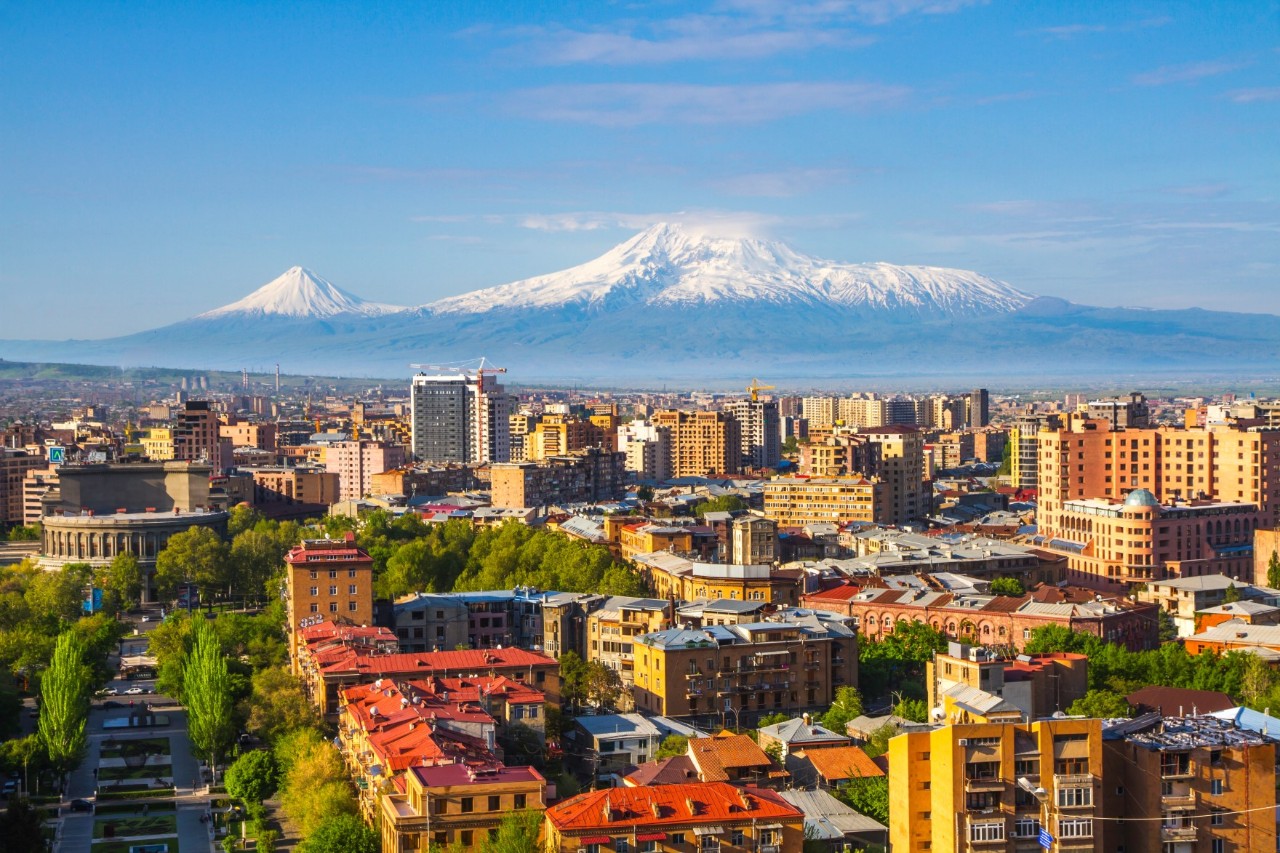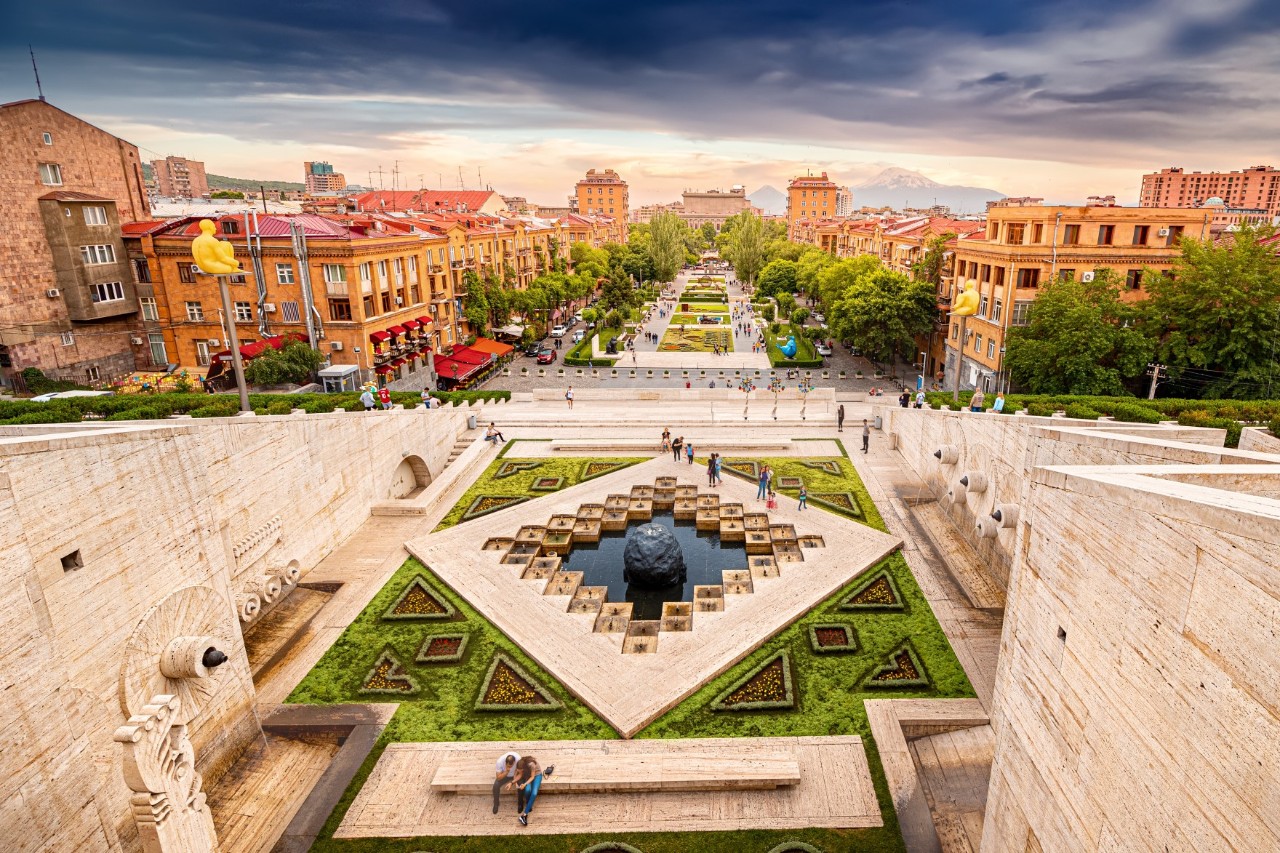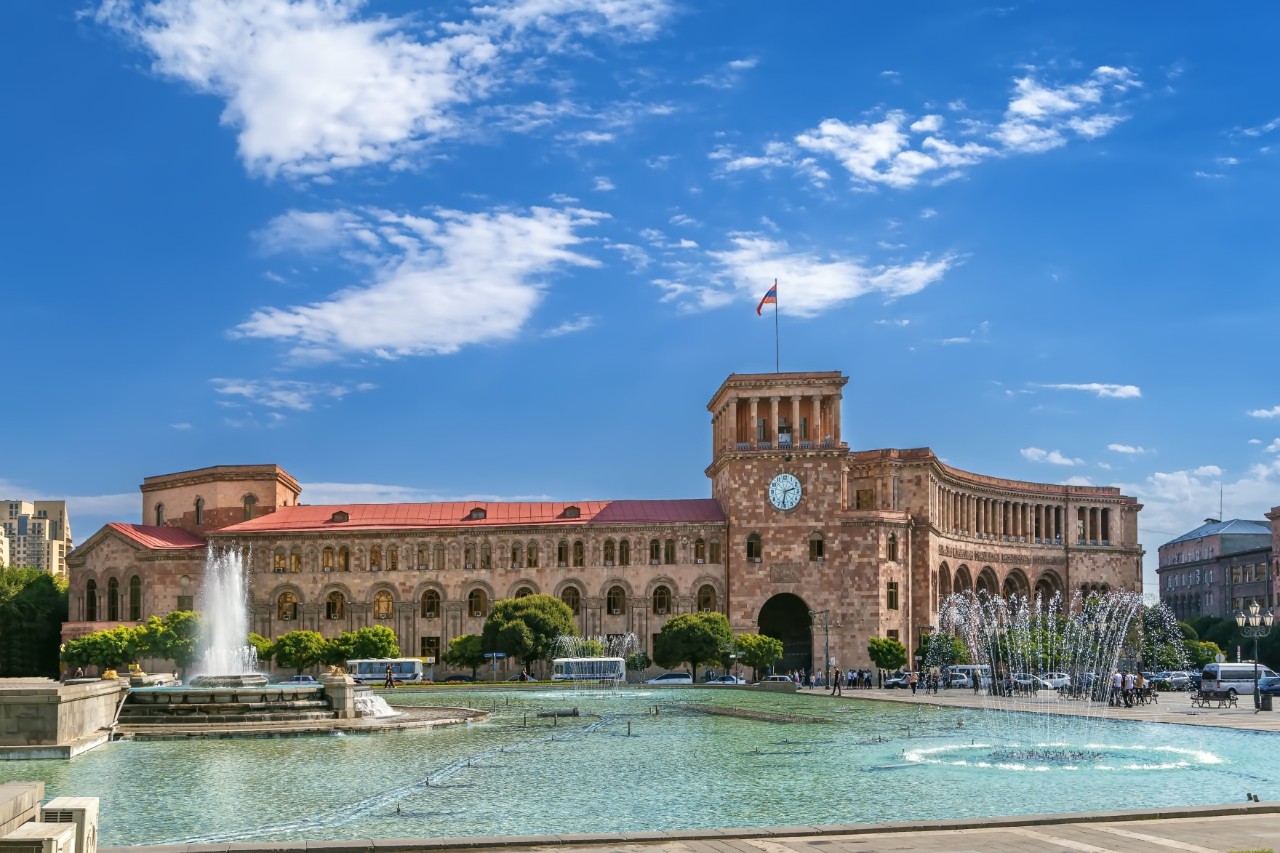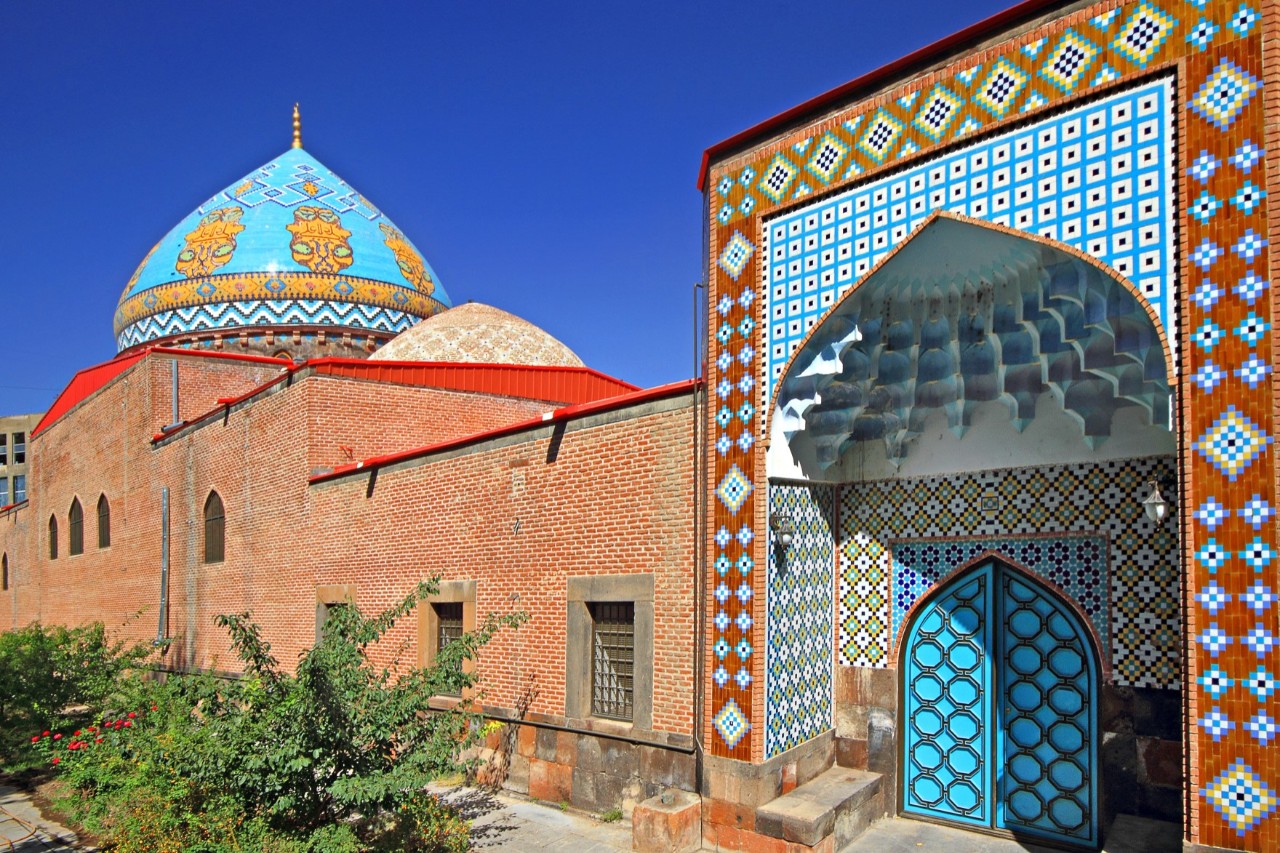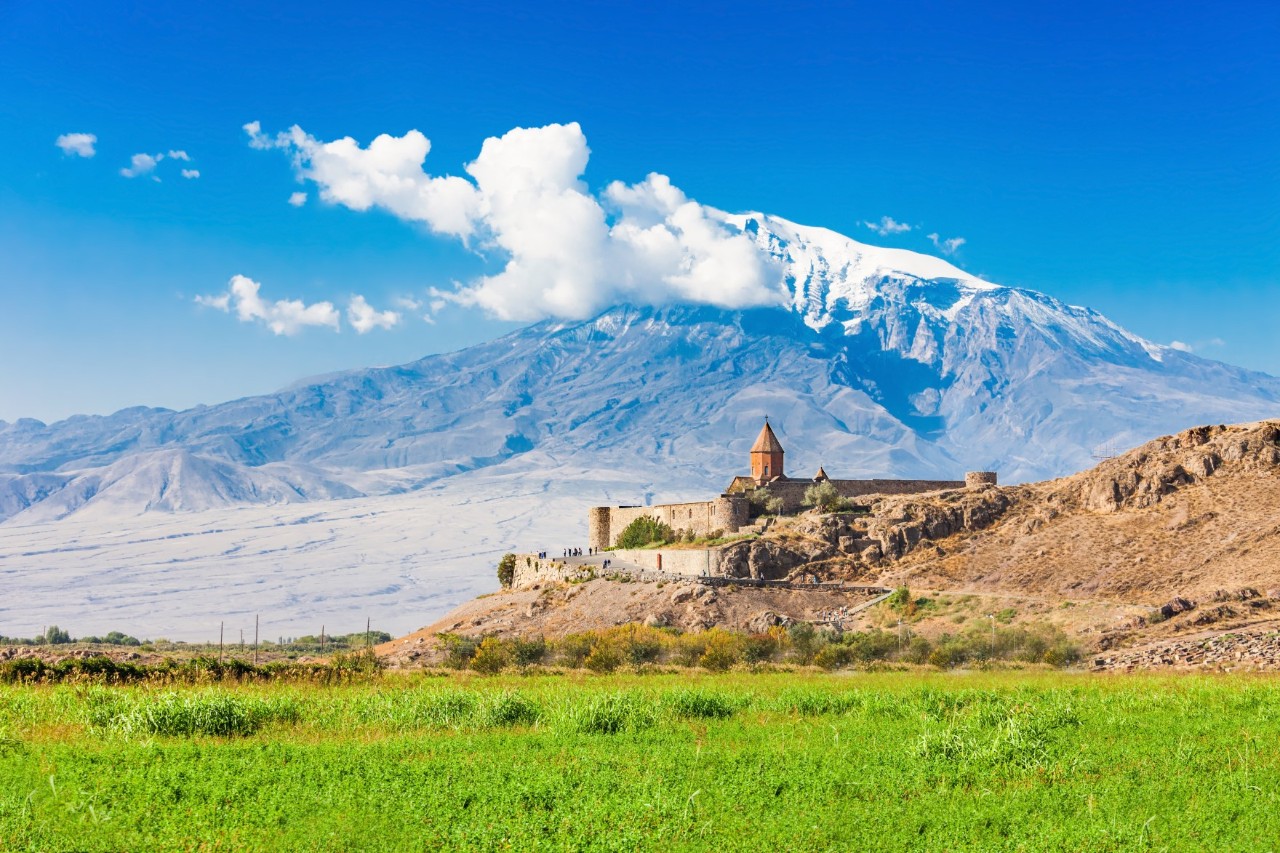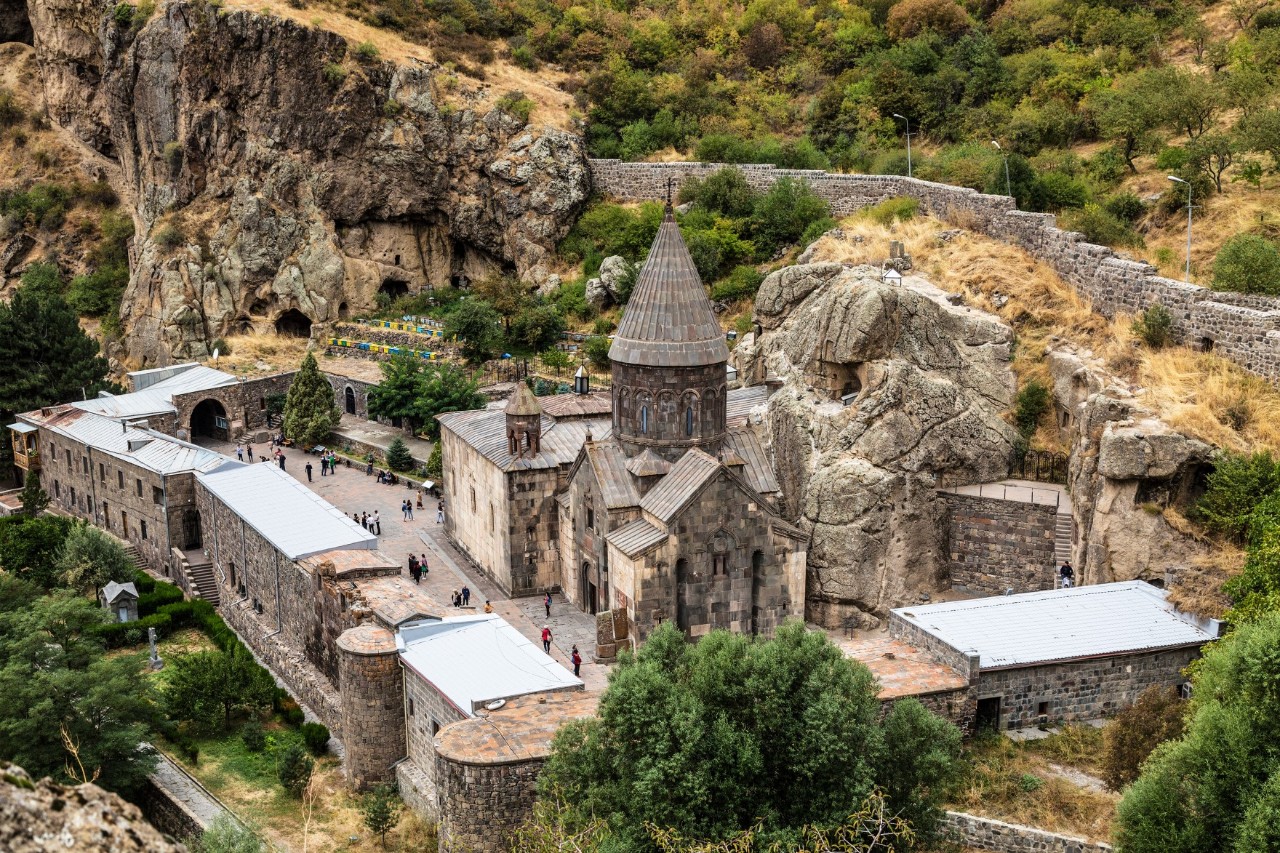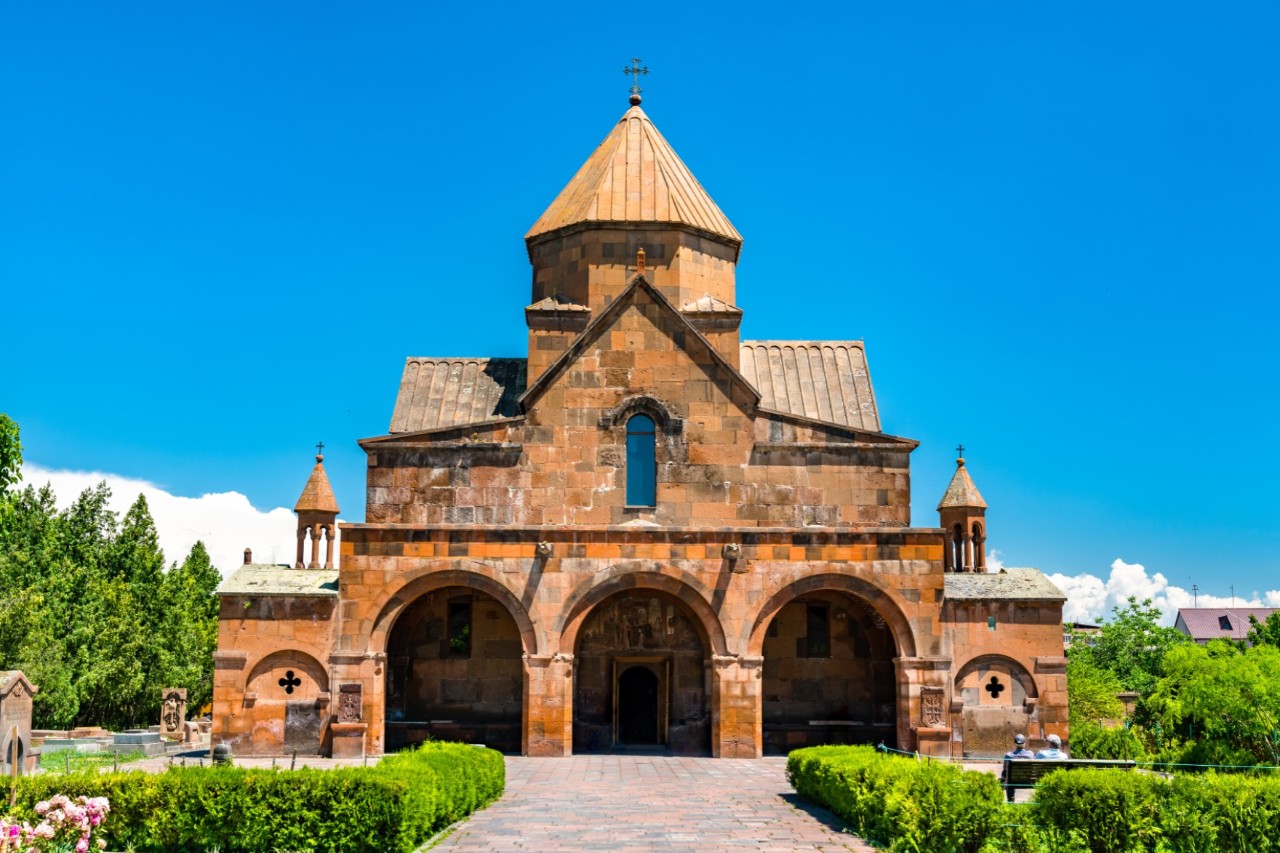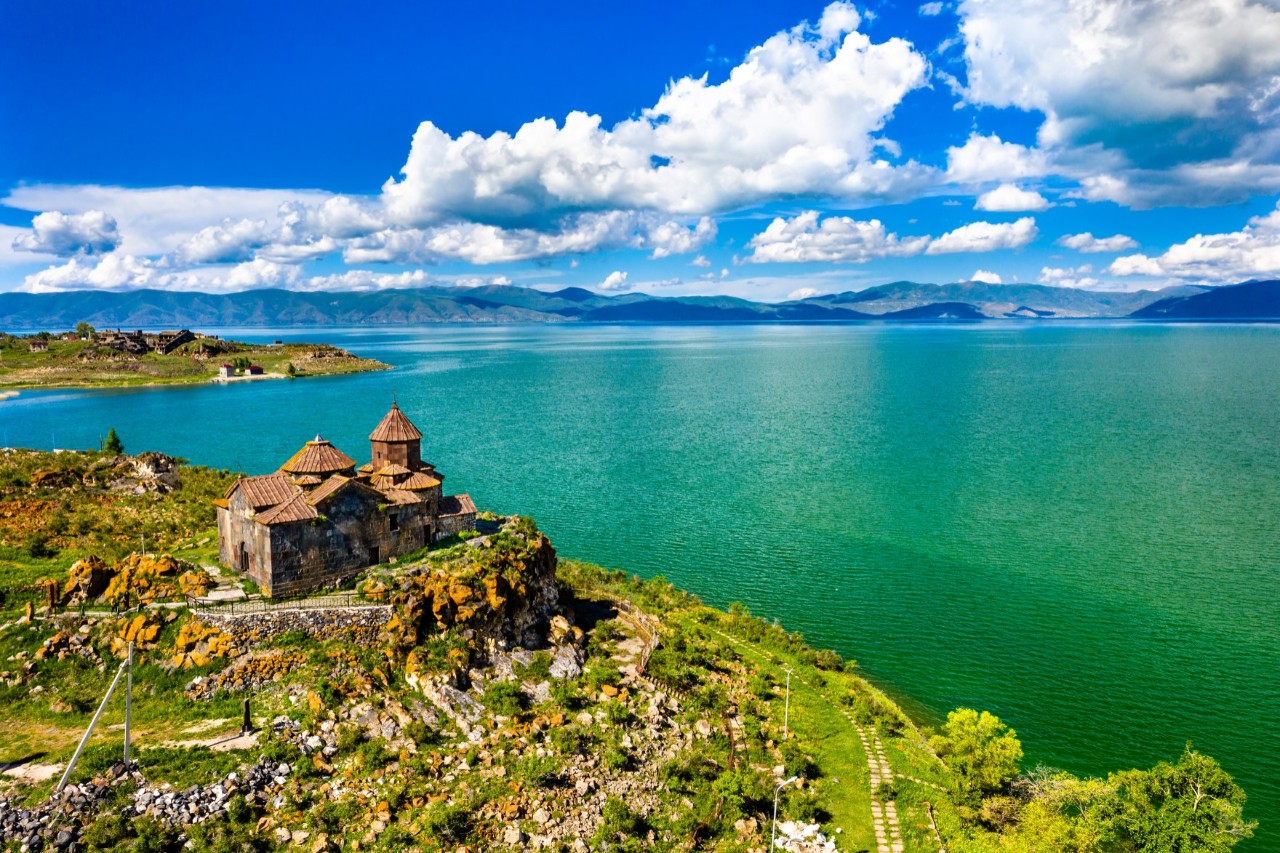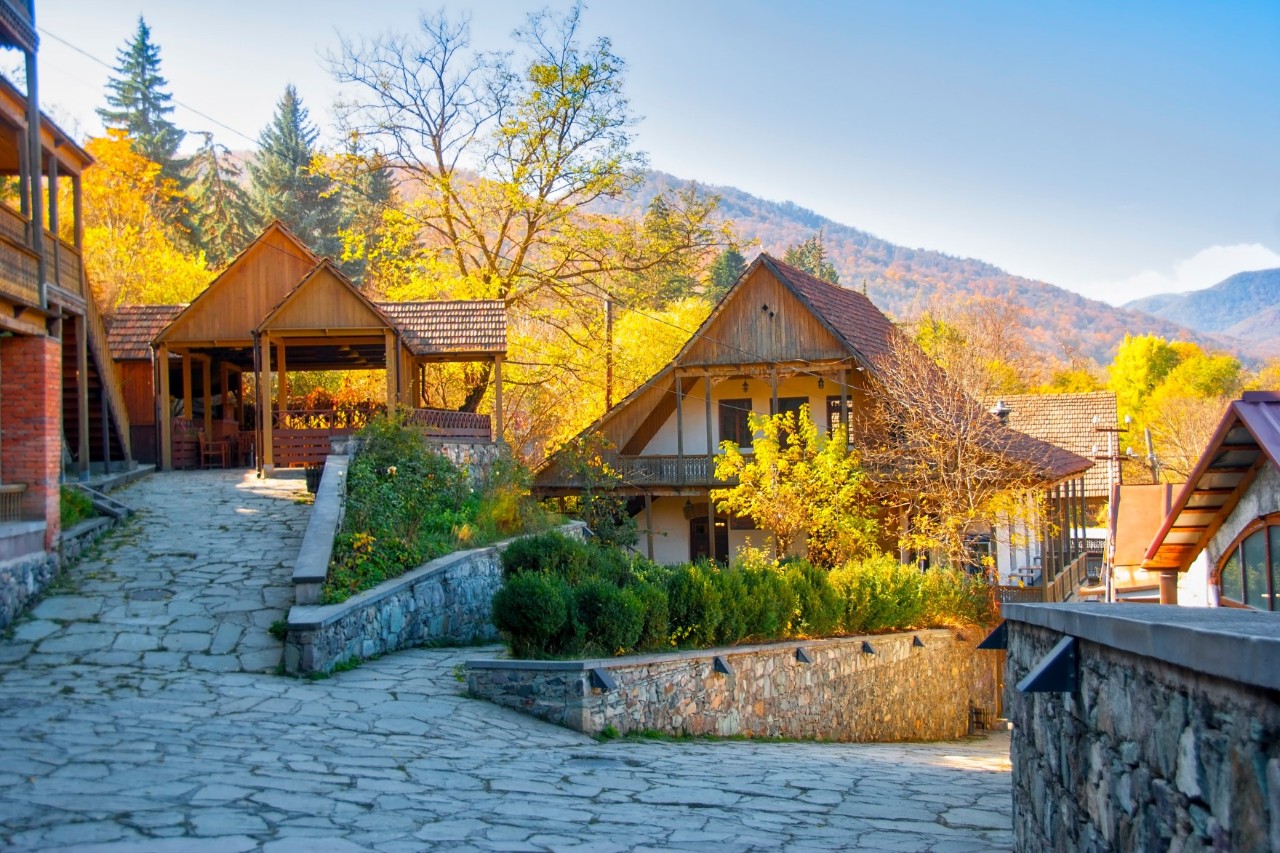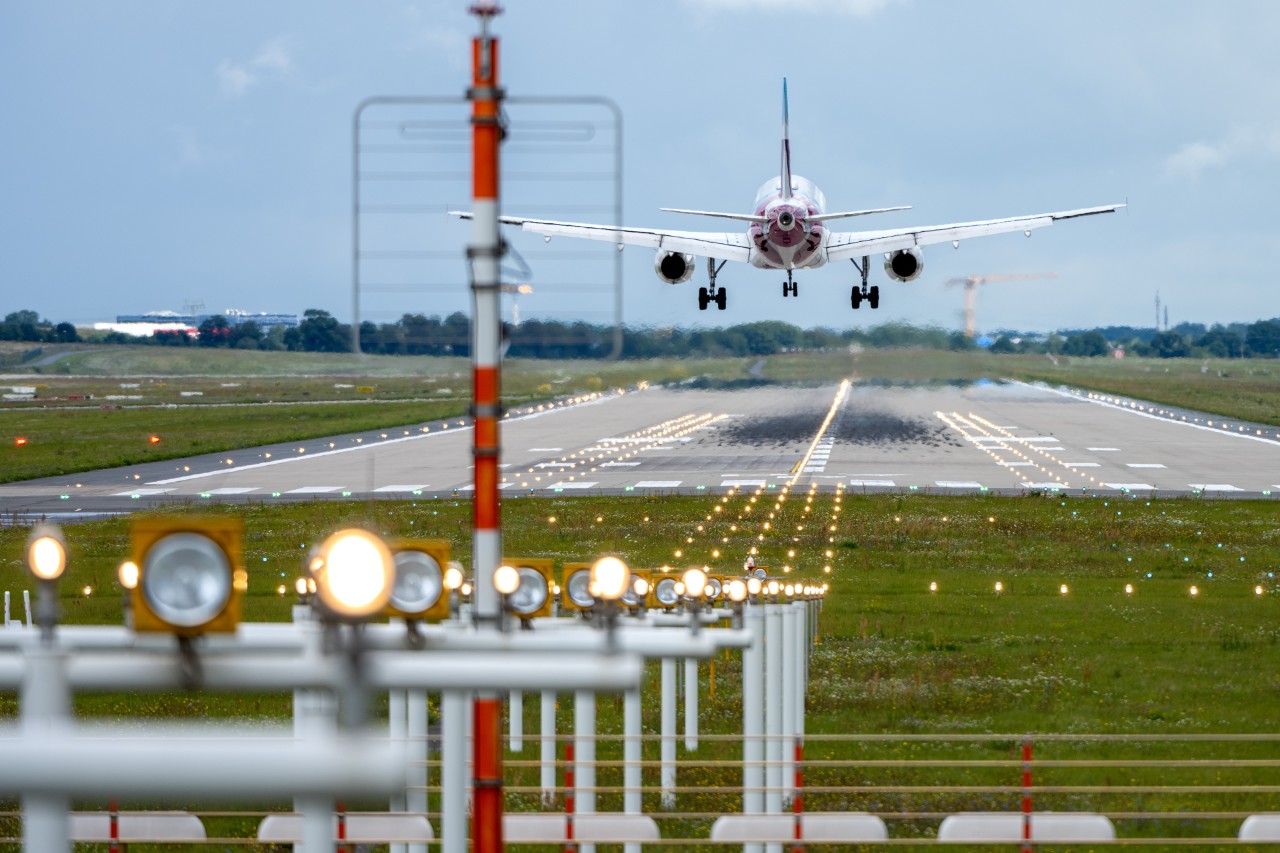Pink City in the Caucasus
Yerevan is one of the oldest cities in the world. The multifaceted metropolis, which has over one million inhabitants and is nicknamed the “Pink City” because of the colour of its buildings, is located at an altitude of around 1,000 metres in the Lesser Caucasus. The cityscape combines medieval churches, monasteries, museums and buildings from different eras with modern buildings. European influences are just as noticeable as the Soviet charm of bygone times. Deeply rooted in its traditions, Armenia’s capital combines a rich culture with a modern lifestyle characterised by lively bars and cosy cafés. The city centre around Republic Square is a great place to explore on foot. Those who take their time and pay attention when strolling through the streets and boulevards will experience Yerevan as an emerging city that has so far been spared from mass tourism. Another discovery is Armenian cuisine, which is an important part of the local culture and includes many delicacies.
Numbers, data, facts
- Time difference: + two hours
- Population: 1.1 million
- Official language: Armenian
- Currency: Armenian dram (AMD)
Travelling in Yerevan – five insights
Between Ararat and the Caucasus: tourism in Armenia
Still relatively unknown to tourists, Armenia is an unusual and rewarding destination. With its ancient monasteries, valuable cultural monuments and impressive mountain landscapes, the country in the South Caucasus looks back on 3,000 years of cultural history between Europe and Asia. Day trips to the region from Yerevan are an option. It is advisable to start and end the round trip in the capital. The Khor Virap Monastery is located in the valley of the holy Mount Ararat, the Geghard Monastery is a UNESCO World Heritage Site and the Tatev Monastery can be reached via the world’s longest cable car. There are not only monasteries, lakes and picturesque villages to discover along the way but also the warm hospitality of the locals in this country that lies between Georgia, Azerbaijan, Iran and Turkey.
Undiscovered and beautiful: tourism in Armenia
Yerevan from BER
- Airline to Yerevan
- Airport from BER
Five recommendations for ...
- The evening light show at Republic Square
- A ballet performance at the opera
- The scent of fruit and spices at the central market
- A walk through the old district of Kond
- The 527 steps of the Cascade and the view from the top
- Spas – yoghurt soup with wheat
- Harissa – savoury porridge with chicken
- Dolma – stuffed vine and cabbage leaves
- Lavash – traditional, wafer-thin flatbread
- Ghapama – pumpkin stuffed with rice and dried fruit
- The Matenadaran Archive with its old manuscripts
- The National Gallery with the largest collection of Armenian art
- The small Erebuni Museum with archaeological finds on the history of Yerevan
- The Cascade with its sculptures, mosaics and water sculptures
- The 52-metre-high Mother Armenia statue
Picture Source title:
© ARAMYAN/stock.adobe.com
The information published on this page is current as of the date of publication or update.


